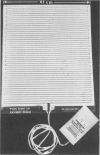Abstract
Fifty six children aged from 6-16 years who wet their beds at night were entered into a controlled trial of two alarm devices: a traditional alarm using a wet sensor mat on the bed attached to an alarm bell out of reach of the child, and a mini alarm system incorporating a tiny perineal wet sensor attached to a small alarm worn on the child's clothing. A quota allocation system ensured comparability between the two treatment groups. The children were encouraged to use the alarm for four months. Both alarms were equally effective in helping children to become dry. There was no significant difference between the number of children unable to comply with treatment or to be helped by each alarm. The rate of acquisition of dryness was similar for the two groups. The traditional standard alarm was sturdier, more dependable, and easier to maintain, but the mini alarm had some advantages, particularly for girls. Both types of alarm are recommended for general use.
Full text
PDF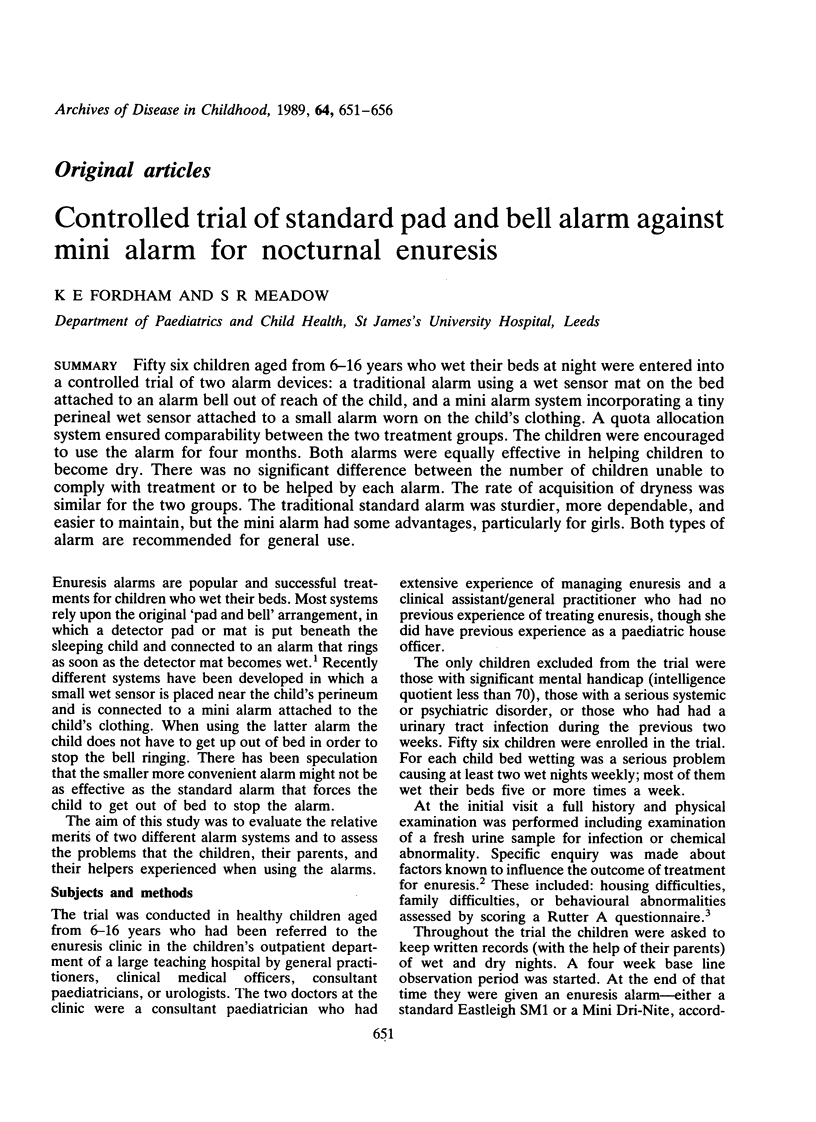
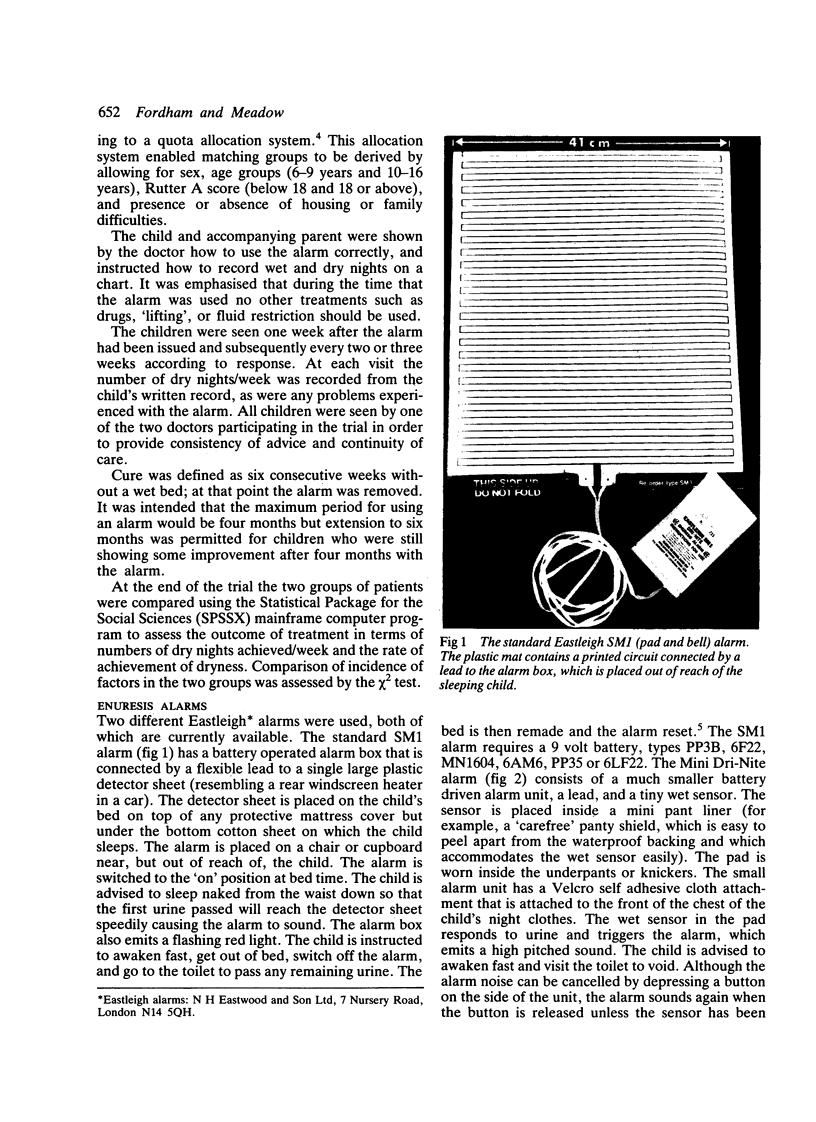
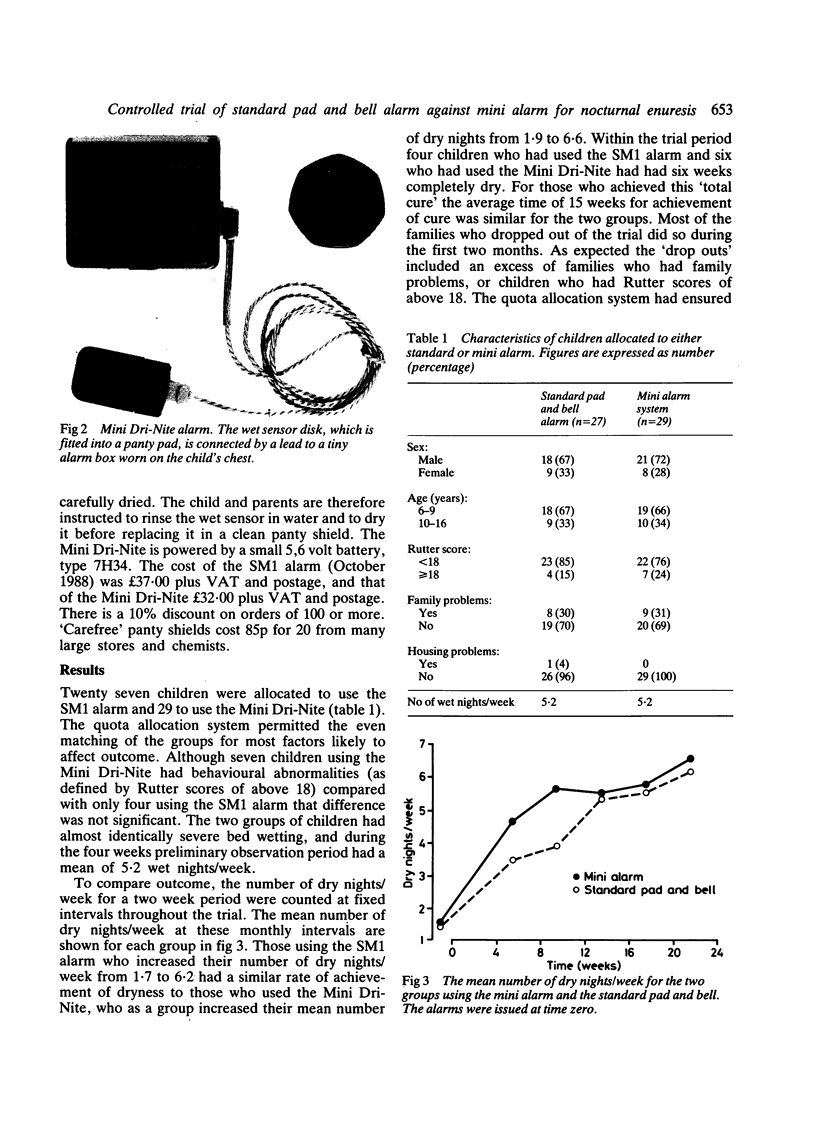
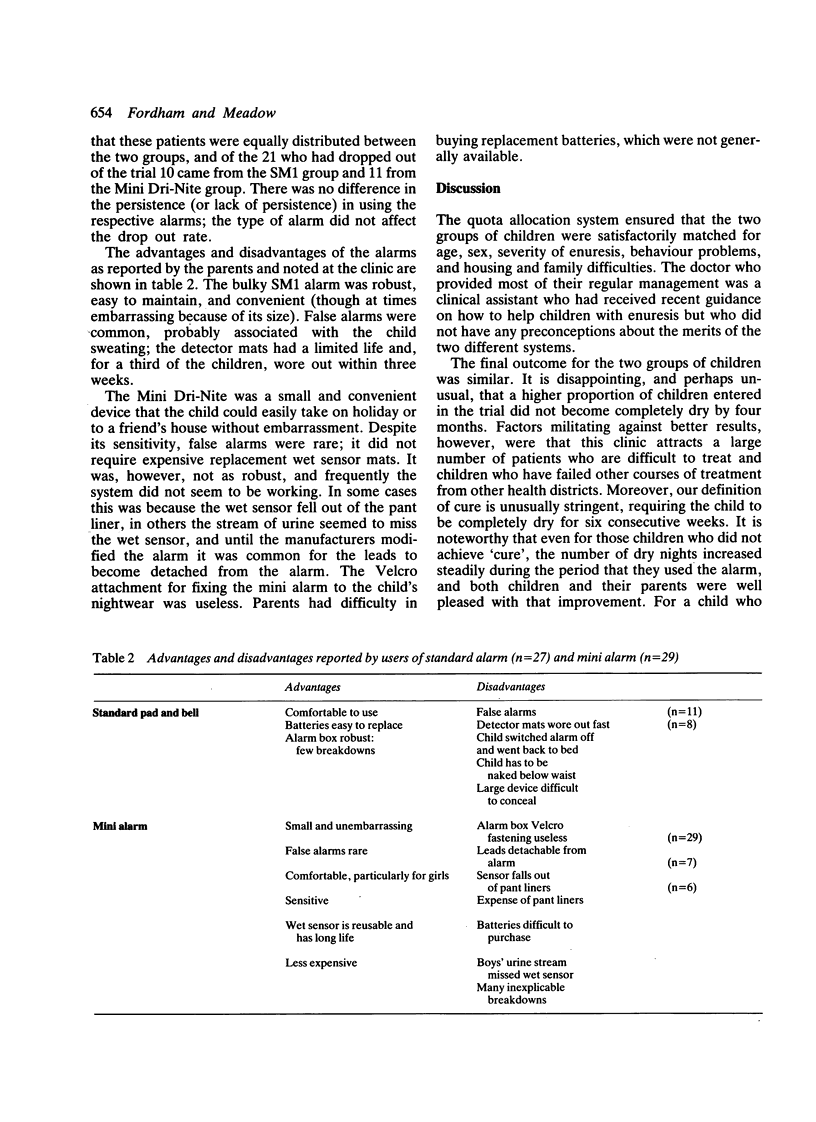
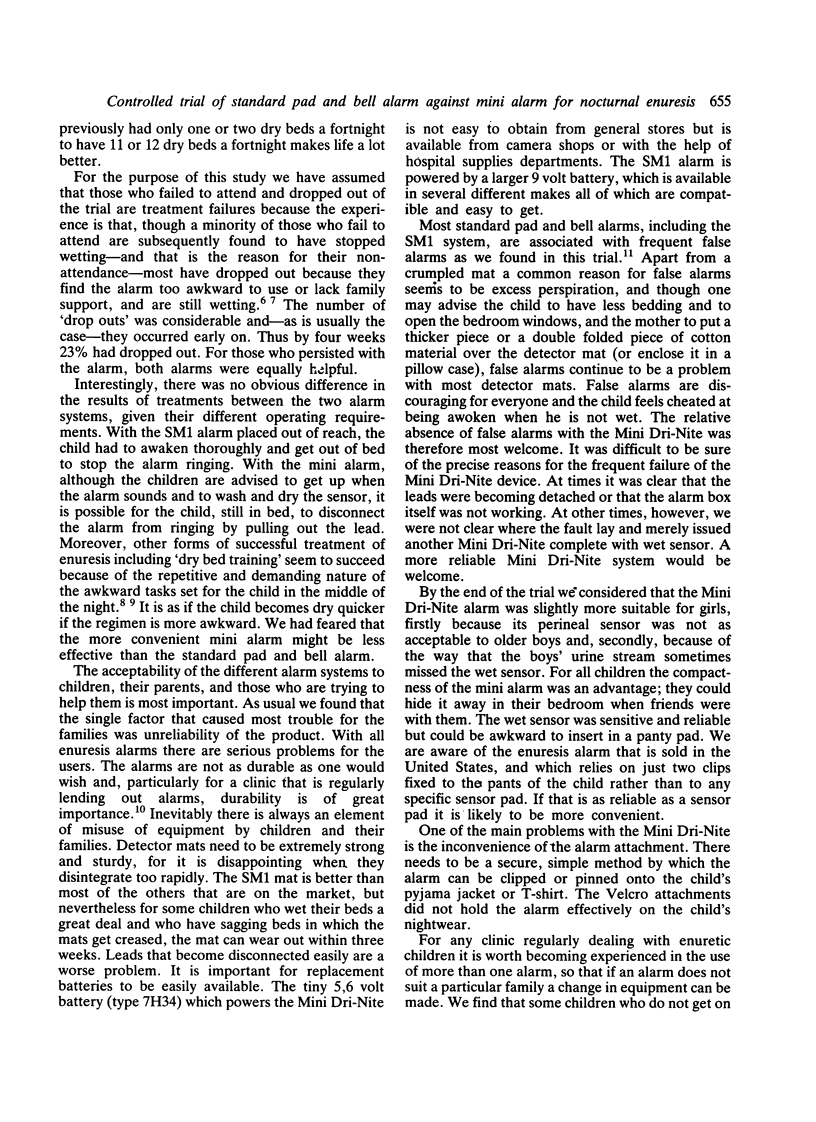
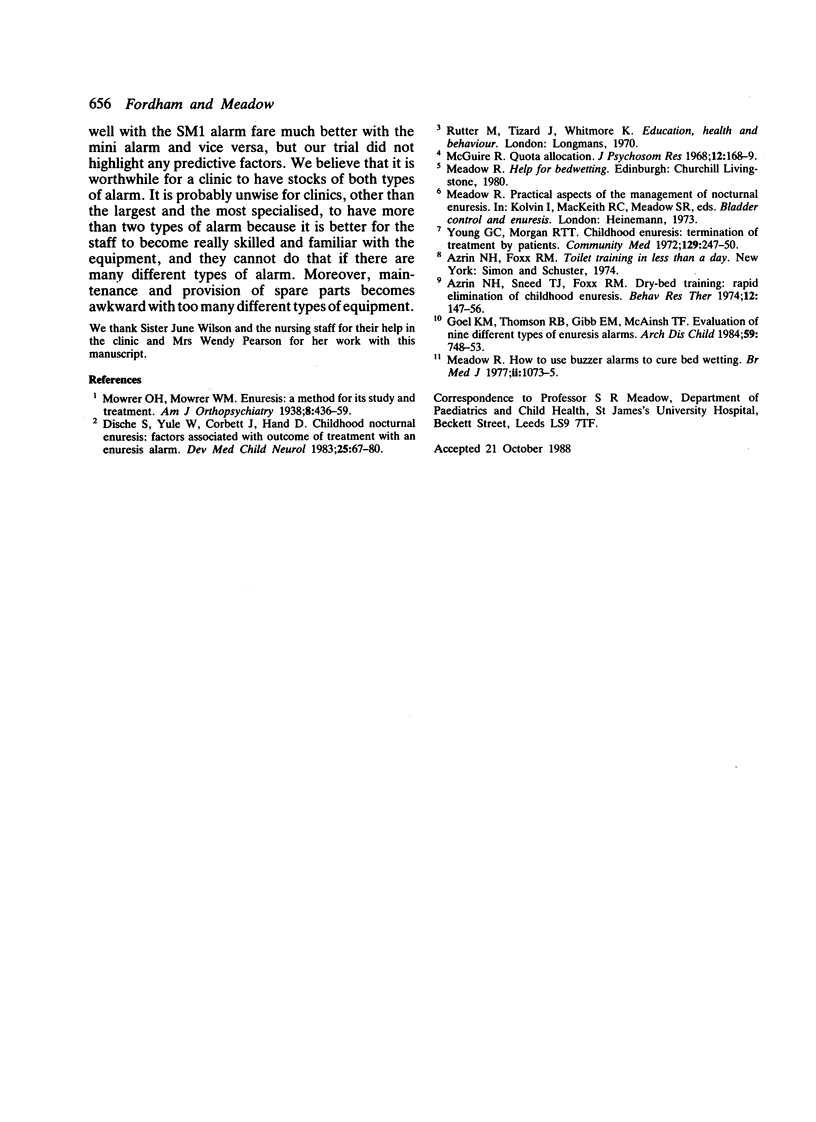
Images in this article
Selected References
These references are in PubMed. This may not be the complete list of references from this article.
- Azrin N. H., Sneed T. J., Foxx R. M. Dry-bed training: rapid elimination of childhood enuresis. Behav Res Ther. 1974 Sep;12(3):147–156. doi: 10.1016/0005-7967(74)90111-9. [DOI] [PubMed] [Google Scholar]
- Dische S., Yule W., Corbett J., Hand D. Childhood nocturnal enuresis: factors associated with outcome of treatment with an enuresis alarm. Dev Med Child Neurol. 1983 Feb;25(1):67–80. doi: 10.1111/j.1469-8749.1983.tb13723.x. [DOI] [PubMed] [Google Scholar]
- Goel K. M., Thomson R. B., Gibb E. M., McAinsh T. F. Evaluation of nine different types of enuresis alarms. Arch Dis Child. 1984 Aug;59(8):748–752. doi: 10.1136/adc.59.8.748. [DOI] [PMC free article] [PubMed] [Google Scholar]
- Meadow R. How to use buzzer alarms to cure bed-wetting. Br Med J. 1977 Oct 22;2(6094):1073–1075. doi: 10.1136/bmj.2.6094.1073. [DOI] [PMC free article] [PubMed] [Google Scholar]



